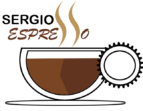Introduction
A vital skill for product managers, especially those aiming for positions at top tech firms like FAANG, is the ability to articulate the design of complex systems. In this blog post, we delve into a common product design question for PM interviews: “How would you design a relational schema for a calendar application?”. We’ll dissect this question using systematic frameworks to draft an answer that reflects both technical acumen and an understanding of user needs.
Detailed Guide on Framework Application
Picking a Suitable Framework
Here, we apply the SYSTEM framework from ‘Decode and Conquer’, which is ideal for technical system design questions. It ensures thoroughness and user-centric design prioritization.
Applying the SYSTEM Method
- Specify the use cases: Start by identifying the core functionalities the calendar application must support, such as creating events, sending invitations, reminders, and recurring events.
- Yield the actors: Determine who will interact with the system, including individuals, businesses, and external systems for syncing with other calendars.
- Sketch the interaction model: Diagram how actors will use the calendar’s functionalities. This can be in the form of flow diagrams or simple use case descriptions.
- Template the essential data models: Identify the essential entities and relationships, such as ‘Users’, ‘Events’, ‘Invitations’, etc.
- Enumerate through scenarios: Walk through common scenarios to test the robustness of the proposed schema, considering issues like repeating events and time zone management.
- Manage the non-functional requirements: Address scalability, performance, and security considerations that impact schema design.
Hypothetical Application Example
Design a schema with entities like ‘Events’, ‘Attendees’, and ‘Reminders’, each with attributes that support common use cases. An ‘Events’ table could include ‘StartTime’, ‘EndTime’, ‘Description’, and foreign keys to ‘User’ and ‘Reminders’ tables.
Fact Checks and Assumptions
We might not know the exact volume of transactions, but can design for scalability assuming a large user base, utilizing principles like normalization and indexing to optimize for performance.
Effective Communication Tips
- Articulate the rationale behind your design choices, linking them directly to the user needs and technical requirements.
- Ask clarifying questions to the interviewer to ensure your solution aligns with their expectations.
- Keep the language simple and avoid deep technical jargon that may not be necessary in the context of a PM interview.
Conclusion
In designing a relational schema for a calendar application, it’s important to exhibit both a user-centric approach and a sound understanding of database principles. The SYSTEM framework is a powerful tool to methodically work through such a design challenge. Practicing with frameworks like these will sharpen your ability to deliver clear and compelling responses in your product management interviews.
